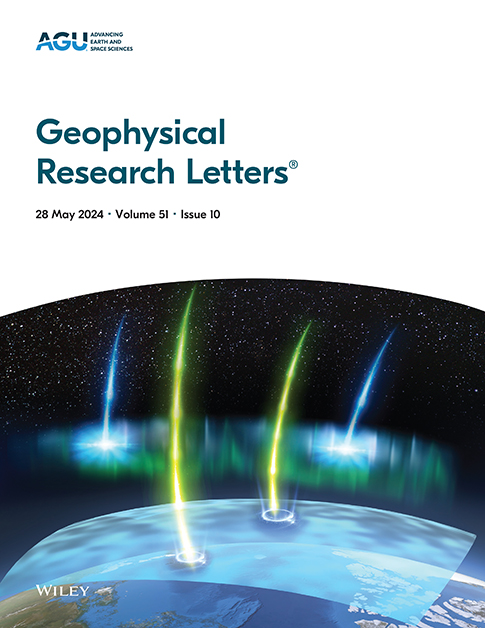Statistical Analysis of the Warm Plasma Cloak in the Dayside Magnetosphere: 9 Years of MMS Observations
IF 4.6
1区 地球科学
Q1 GEOSCIENCES, MULTIDISCIPLINARY
引用次数: 0
Abstract
The warm plasma cloak (WPC) is a plasma population located in the outer magnetosphere. It is composed primarily of electrons and ions with energies of tens to hundreds electronvolts and can contain significant amounts of . We conduct a statistical survey of the WPC using 9 years of observations in the dayside magnetosphere from the Magnetospheric Multiscale mission. WPC is found in of the observations and it is 1.6 times more abundant in the dawn than in the dusk sector. -rich WPC is detected in of the observations, being 3 times more probable in the dawn sector. We find that after a peak of strong geomagnetic activity, it takes approximately 9 hr to detect the WPC in the dayside magnetosphere.

日侧磁层温暖等离子体斗篷的统计分析:9年MMS观测
暖等离子体斗篷(WPC)是位于外磁层的等离子体群。它主要由电子和能量为几十到几百电子伏特的H +离子组成,并可含有大量的O +$ {\ mathrm {O }}^{+}$ .我们利用磁层多尺度任务对日侧磁层9年的观测数据对WPC进行了统计调查。WPC在51%的观测中被发现,它在黎明的数量是黄昏部分的1.6倍。O + ${\mathrm{O}}^{+}$ -富WPC在7.5% $7.5\%$的观测中被检测到,在黎明部分的可能性是其3倍。我们发现,在强烈的地磁活动高峰之后,在日侧磁层探测WPC大约需要9小时。
本文章由计算机程序翻译,如有差异,请以英文原文为准。
求助全文
约1分钟内获得全文
求助全文
来源期刊

Geophysical Research Letters
地学-地球科学综合
CiteScore
9.00
自引率
9.60%
发文量
1588
审稿时长
2.2 months
期刊介绍:
Geophysical Research Letters (GRL) publishes high-impact, innovative, and timely research on major scientific advances in all the major geoscience disciplines. Papers are communications-length articles and should have broad and immediate implications in their discipline or across the geosciences. GRLmaintains the fastest turn-around of all high-impact publications in the geosciences and works closely with authors to ensure broad visibility of top papers.
 求助内容:
求助内容: 应助结果提醒方式:
应助结果提醒方式:


